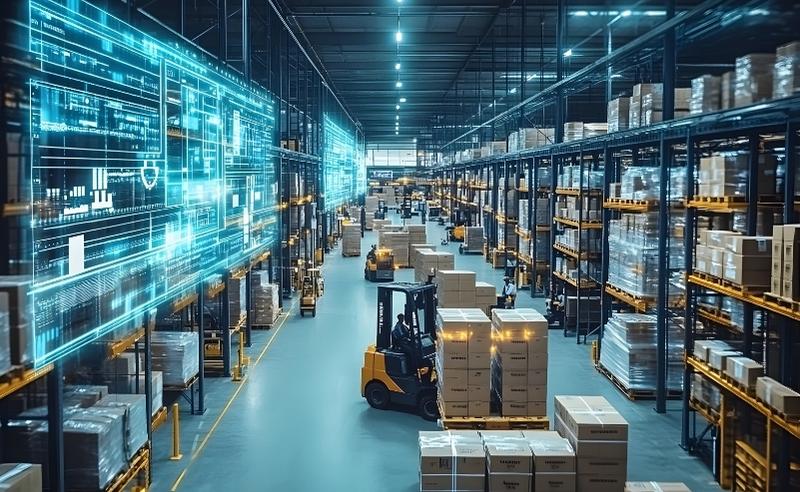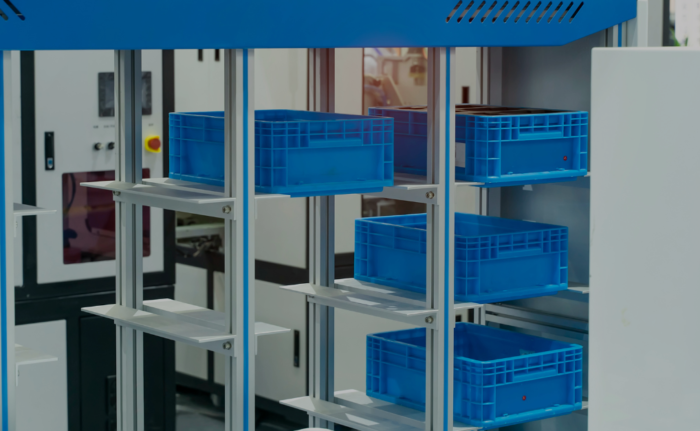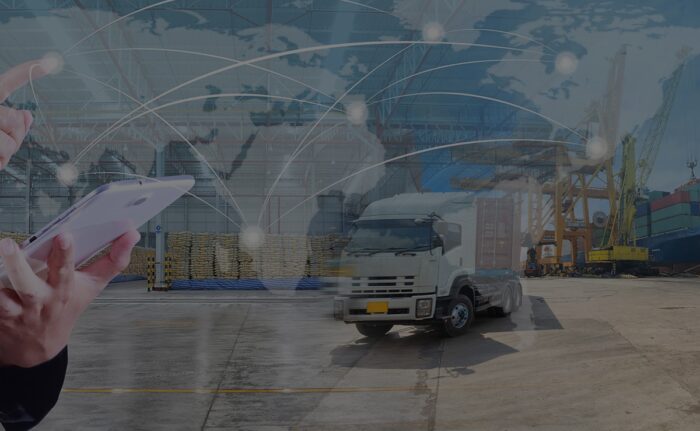
Over the last decade, the role of the Warehouse Management System (WMS) has changed dramatically. Once thought of as a system of record—focused mainly on inventory tracking and order management—it’s now expected to act as a central hub for real-time execution, intelligent decision-making, and cross-functional orchestration.
This transformation is being driven by a convergence of new technologies that not only improve warehouse performance, but fundamentally reshape how fulfillment operations are designed and managed. As businesses respond to faster order cycles, rising labor costs, and customer expectations for speed and accuracy, WMS platforms must evolve—or risk falling behind.
Here are the technologies having the most profound impact on the next generation of WMS solutions.
1. Automation & Robotics: Expanding the Reach of WMS
Automation is no longer an emerging trend—it’s an operational imperative. From autonomous mobile robots (AMRs) to goods-to-person (GTP) systems, automation technologies are now widely deployed to reduce reliance on manual labor, improve throughput, and ensure consistency.
In modern fulfillment environments, WMS platforms must go beyond passive data exchange. They need to actively manage and coordinate a growing network of automated systems. This means:
- Assigning tasks based on robot availability and system load
- Optimizing movement across warehouse zones in real time
- Feeding back high-resolution data to continuously refine workflows
A WMS serves as the “brain” of warehouse operations, while automation systems—whether robots, conveyors, or shuttles—function as the limbs. Seamless communication between these elements is essential. Without real-time, two-way integration, automation may create isolated pockets of efficiency—or even chaos.
WMS solutions of the future will be built with native connectors to leading automation platforms and will include warehouse execution system (WES) capabilities for real-time control.
2. Artificial Intelligence & Machine Learning: Driving Predictive Agility
Artificial intelligence (AI) and machine learning (ML) are becoming foundational elements of modern WMS solutions. These technologies enable systems to go beyond fixed rules and react intelligently to dynamic warehouse conditions.
Key areas of impact include:
- Predictive Picking – ML-based algorithms analyze historical data and current order loads to optimize pick paths dynamically. This minimizes travel time and congestion.
- Inventory Balancing – AI forecasts demand and suggests or automates inventory repositioning to reduce stockouts or overstocks across locations.
- Proactive Exception Management – Rather than just flagging errors after the fact, AI models can identify trends that predict issues before they happen, enabling teams to intervene early.
These capabilities are moving from theory to practice, delivering measurable business value as AI helps organizations adapt more quickly. Future applications will extend further, coordinating not only tasks but also the resources—human or robotic—required to complete them.
3. IoT & Real-Time Visibility: Making Data Actionable
The proliferation of Internet of Things (IoT) devices has opened up a new frontier for WMS solutions. With sensors on forklifts, racking systems, and even inventory items themselves, warehouses can now collect and respond to real-time data from every corner of the operation.
The value lies not in collecting more data, but in making that data actionable. Examples include:
- Pinpoint Inventory Tracking: With real-time location data, you can trace an item’s exact position, even in large or outdoor yards.
- Proactive Maintenance: Monitoring equipment usage and conditions helps prevent unplanned downtime.
- Dynamic Workflow Adjustments: Environmental data—such as temperature or humidity—can trigger changes in product handling or storage locations.
Ten years ago, WMS performance was measured in end-of-day reports. Today, it’s about what’s happening right now. And IoT is what makes that real-time view possible.
4. Multi-Agent Orchestration: The Key to Scalable Collaboration
Perhaps the most transformative (and least discussed) technology shaping the future of WMS is Multi-Agent Orchestration (MAO).
As automation grows, the warehouse becomes populated with many different types of agents—AMRs, AGVs, human workers, drones, AI-driven systems, and more. Each is capable of performing discrete tasks. The challenge is getting them to work together effectively.
This is where MAO comes in. It serves as an intelligent control layer that manages:
- Task Distribution: Who (or what) should do what, when, and where.
- Bottleneck Avoidance: If a zone is overloaded, MAO reroutes robots or reprioritizes tasks.
- Workflow Synchronization: Ensures machines and humans aren’t competing for the same space or resources.
With orchestration, automation shifts from fragmented performance to continuous flow, efficient collaboration, and scalable execution, particularly in high-volume/complex environments.
What This Means for WMS Buyers
Understanding these technologies isn’t just an academic exercise. If you’re in the process of evaluating a new WMS or planning a modernization strategy, these capabilities should be on your radar.
Here are five key questions organizations should ask vendors:
- Is your WMS built to integrate with a diverse mix of automation platforms?
- Can it leverage AI to improve decision-making across your operation—not just at the planning level, but during execution?
- Does it support real-time visibility through IoT devices?
- Is there a clear path for orchestrating both human and robotic labor?
- Are your systems built for adaptation—or do they require manual intervention every time conditions change?
WMS solutions of the future will not be static. They will need to evolve continuously—adapting to new technologies, customer expectations, and operating models. The good news is that the tools are here. What’s needed now is the strategy, discipline, and vision to put them to work.
Want to learn more? Check out our new white paper, How WMS Is Powering the Next Generation of Smart Warehousing.


